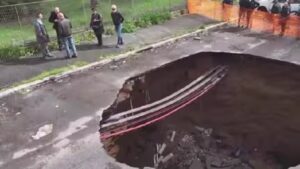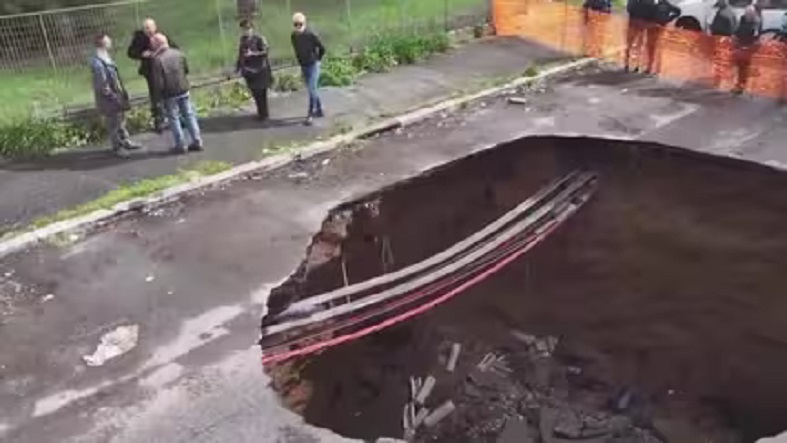Unveiling the Underworld: Sinkholes Strike Rome
In a disconcerting turn of events, Italy finds itself grappling with a peculiar phenomenon as sinkholes emerge in the heart of major cities like Naples and Rome, highlighting the unsettling reality of fragile subterranean terrain in the country. The lingering presence of friable rock beneath urban foundations poses a persistent risk, culminating in recent incidents that have captured public attention, particularly in the capital city of Rome.

The south-eastern district of Rome became the center stage for a dramatic episode when two cars were engulfed by a thirteen-meter-deep sinkhole, shattering the tranquility of the morning and leaving residents startled by the sudden disappearance of vehicles into the gaping chasm. Recounting the harrowing experience, a local resident expressed the shock and awe that accompanied the emergence of the sinkhole, narrating how the ground gave way to reveal a menacing abyss beneath the ordinary streets of the Italian city.
The incident sheds light on the precarious nature of Rome’s geological landscape, characterized by fragile basements that are susceptible to sudden collapses and sinkholes. Beneath the bustling streets and historic edifices lie ancient galleries dating back thousands of years, their structural integrity compromised by the ravages of time and seismic activity. The specter of landslides and cave-ins looms large over the city, with geologists like Stefania Nisio from the ISPR in Rome warning of the catastrophic potential for widespread collapses in the event of a seismic event, underscoring the urgent need for vigilance and proactive measures to mitigate risks.
The unsettling reality of sinkholes is not confined to Rome alone, as other Italian cities grapple with similar challenges. In Naples, a sinkhole manifested itself in the parking lot of a hospital, adding to the growing list of urban areas plagued by subterranean instability. These sinkholes, often shrouded in unpredictability, strike without warning, catching residents and authorities off guard and underscoring the imperative of comprehensive monitoring and preemptive strategies to prevent catastrophic incidents.
The emergence of sinkholes serves as a stark reminder of the delicate balance between urban development and natural topography, urging a reevaluation of construction practices and infrastructure planning to safeguard against potential hazards lurking beneath the surface. As Italy navigates the complexities of managing its geological vulnerabilities, the specter of sinkholes looms large as a sobering symbol of the intrinsic fragility of human settlements precariously perched atop ancient terrains with turbulent histories.
Amidst the unsettling tales of sinkholes swallowing cars and streets, a call for enhanced geological surveys, disaster preparedness, and sustainable urban planning reverberates, underscoring the need for a harmonious coexistence between human habitation and the capricious forces of nature that shape and redefine the landscapes we inhabit.













































